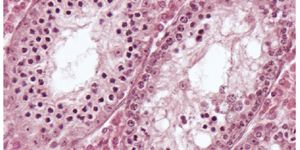An Antarctic octopus gives literal meaning to the phrase "blue blood," as a new study finds the cephalopod has blue pigments in its blood that allow it to survive sub-zero temperatures and possibly higher temps associated with climate change too.

The findings, published in the journal Frontiers in Zoology, help to explain why the Antarctic octopus -- Pareledone charcoti -- is faring well now, while other animals in its habitat are not.
"This is the first study providing clear evidence that the octopods' blue blood pigment, haemocyanin, undergoes functional changes to improve the supply of oxygen to tissue at sub-zero temperatures," said lead author Michael Oellermann, from the Alfred-Wegener-Institute, in a release.
"This is important," he continued, "because it highlights a very different response compared to Antarctic fish to the cold conditions in the Southern Ocean. The results also imply that due to improved oxygen supply by haemocyanin at higher temperatures, this octopod may be physiologically better equipped than Antarctic fishes to cope with global warming."
The Antarctic Ocean is home to these fish, the octopus, and many other creatures despite the region's history of inhospitably cold temperatures. While it can be hard to deliver oxygen to tissues in the cold due to lower oxygen diffusion and increased blood viscosity, ice-cold waters already contain large amounts of dissolved oxygen.
With that in mind, and hoping to learn more about the sturdy "blue blood" octopus, Oellermann and his team collected and analyzed the haemolymph (a fluid equivalent to blood) from the Antarctic octopus. They also did this for two other octopus species collected from warmer climates: the Southeast Australian Octopus pallidus and the Mediterranean Eledone moschata.
All of these marine animals possess three hearts and contractile veins that pump haemolymph, which is highly enriched with haemocyanin. This oxygen transport protein is analogous to haemoglobin in humans and many other animals. It leads to blue-colored blood, however, instead of red, which has to do with components in the pigment and how the oxygen is processed in the body.
The Antarctic octopus had the bluest blood of all, with at least 40 percent more haemocyanin in its blood compared to the other species. This is among the highest levels ever reported.
The Antarctic octopus' haemocyanin was also found to shuttle oxygen between gills and tissue far better when temperatures were above freezing. This is where the other octopuses lagged behind. The ability may help the Antarctic species to tolerate warmer temperatures in addition to the cold.
It could also explain the lifestyle of this animal, which tends to hang out in warmer (well, warmer for Antarctica) shallow waters and rock pools.
Source: Discovery News









